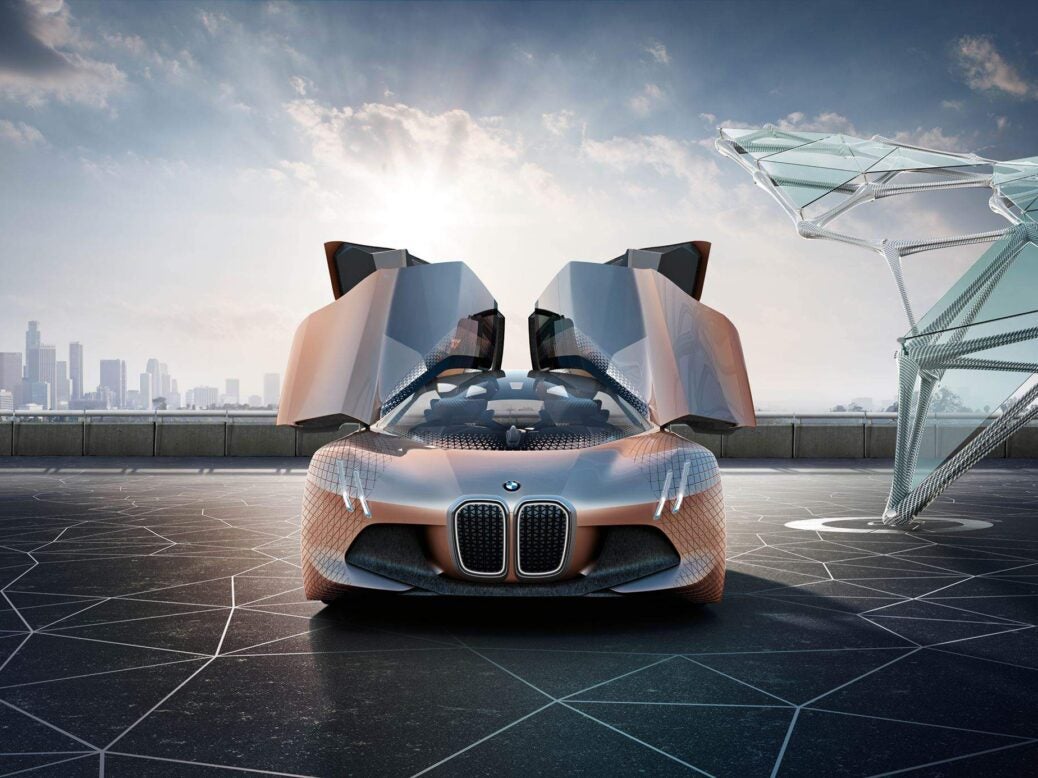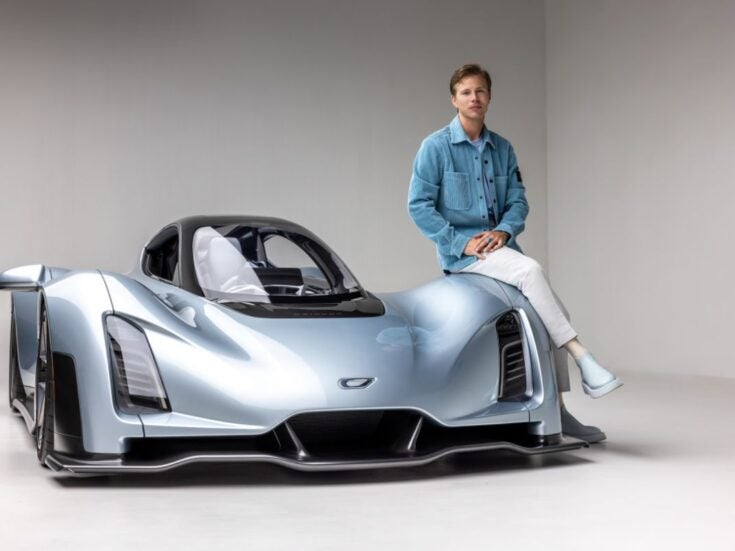
To celebrate its centennial anniversary, German manufacturer BMW Group is unveiling a series of future-looking concept vehicles, the first of which is a shape-shifting autonomous car with artificial intelligence.
The unveiling of BMW’s ‘Vision Vehicle’ concept car aims to set the tone for design and product development for the next 100 years. The project, entitled ‘Vision Next 100’ is an attempt by the manufacturer to predict the look and functionality of cars when driverless vehicles are ordinary and artificial intelligence can learn and then predict a passenger’s behaviour.

‘If, as a designer, you are able to imagine something, there’s a good chance it could one day become reality,’ said BMW’s design chief Adrian van Hooydonk. ‘So our objective with the BMW Vision Next 100 was to develop a future scenario that people would engage with.’
The concept vehicle features 800 organic LED moving triangles, which are set into the instrument panel and fitted to the side panels on the outside. The shape-shifting triangles — a feature BMW is calling Alive Geometry — would move to allow the car to communicate with the driver. Featuring a windshield that is an interactive digital display, the interior dashboard composed of the triangles can reconfigure based on communication with the driver’s movements. However, some elements have been toned down — the car will feature ‘Boost’ and ‘Ease’ modes, which enable the driver to switch from self to autonomous driving mode.
When in Boost mode, the driver will be in control of the car, the seat and steering wheel will change position to give the driver a safer view out of the car while the central console would slide across to make it easier for various settings to be selected via gesture control. The windscreen would act as a display, projecting the ideal driving line, speed and other information. In Ease mode the car would withdraw its steering wheel and centre console. Headrests would also move to one side allowing the driver to recline. The windscreen’s Head-Up Display would then offer passengers the opportunity to browse the internet, watch movies or post to their social media channels. Lights positioned at the vehicle’s front and rear could change colour depending on which mode the driver has selected, acting as a warning to other road users and pedestrians.

The car will also feature a digital companion for the driver, which interprets collected data on the owner’s mobility habits and learns from it. The Companion, a large gemstone-shaped component, will learn the driver’s habits after a few journeys to ‘automatically perform routine tasks.’

BMW has built of model of the car to show how it might look in reality. The exterior of the vehicle is copper coloured and features large wheels positioned at the outer edges of the body. Sensors detect the owner’s approach and automatically open the wing doors.
The designers used carbon fibre to form the side panels and fabrics made from recycled or renewable materials for the interior furnishings. ‘To save resources and support more sustainable manufacturing, less use will be made of wood and leather while innovative materials and the consequent new possibilities in design and production gradually come to the fore.’

BMW Group is celebrating its centenary year by embarking on a world tour, where the company will unveil its vision for the future of MINI, Rolls Royce and BMW Motorrad – all brands owned by the German manufacturer. Vision Vehicles that will be unveiled in London during the European leg of its global tour from June 16 to June 26. The final stop will be in Los Angeles from October 6 to October 11 where a final BMW Motorrad Vision Vehicle will be revealed.
Image Credits: BMW






